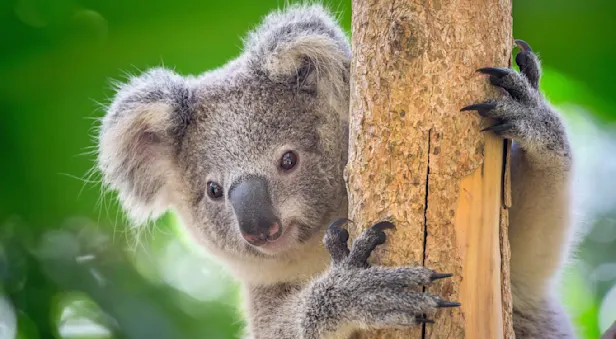Know Before You Go
Possum Facts | Australia South Wildlife Guide
Possums are some of the most industrious marsupials. Living in treetop nests at the fringes of society and underneath the roofs of suburban homes, possums are commonly encountered by Australia’s human residents. Consequences of this proximity are high vehicle mortality rates and attacks by pet cats and dogs. In the wild, possums are predominantly leaf-eaters, but in urban areas, they will devour anything from garden fruit and rosebuds to garbage. The common brushtail is the most observed, though the common ringtail frequently makes an appearance too.
The common brushtail was introduced to New Zealand in the 1830s and has been considered a pest species ever since. In Australia, however, they are protected. Brushtails provide a valuable ecosystem service to native vegetation. As a nocturnal creature, one of this possum’s favorite midnight snacks is the mistletoe, a semi-parasitic plant that strips the gum trees of sap water and minerals. The common brushtail is a social species and communicates through sound and scent. Deep guttural coughs and sharp hisses intensify during the mating season. After a 17.5-day gestation period, the hairless young climbs to the mother’s forward-facing pouch and suckles from her teats. After 120 days the baby ventures out for the first time, and a month later, permanently leaves the pouch. The common ringtail possum shares the silvery coat of the brushtail, but instead of a yellow belly and bushy hind, it has a creme-colored underside and prehensile tail that coils into a white-tipped spiral. Their back feet are syndactyl, meaning there are two or more digits fused together, which helps with gripping. The ringtail carries grass, sticks and shredded bark into a tree hallow where it constructs a nest called a drey. They prefer to munch on young eucalyptus leaves but will happily settle for the flowers and fruit rainforest canopies and suburban gardens provide.
In wetter, higher altitude areas of Australia, several other species of possum rule the roost. There is a northern species known as the short-eared possum from New South Wales and Queensland and a southern species of mountain brushtail possum found in Victoria. The Herbert River ringtail, the emblem of the Queensland Parks and Wildlife Service, is closely related to the Daintree River ringtail. Daintree River ringtail possums have dense, woolly fur and a dark stripe along their back and head. Both ringtails enjoy an arboreal lifestyle, only journeying to the ground on rare occasions. The eastern pygmy possum has soft dense fur and large eyes and ears. Like its more wild relatives, the pygmy possum is frugivorous and insectivorous and feeds on nectar and pollen from eucalypts, banksias and bottlebrushes.
Encounter Australian Animals on These Adventures

Australia South: Tasmania, Kangaroo Island & the Great Ocean Road
Discover the diverse landscapes and ecology of far-south Australia as we explore four national parks and a host of private nature reserves teeming with endemic and endangered wildlife.


Australia North: Kakadu, Kimberley & the Outback
Journey to the back of beyond on this singular itinerary that connects three of Australia’s most remote tracts of untouched wilderness via private chartered flights—plus a luxury train trip on The Ghan.
























